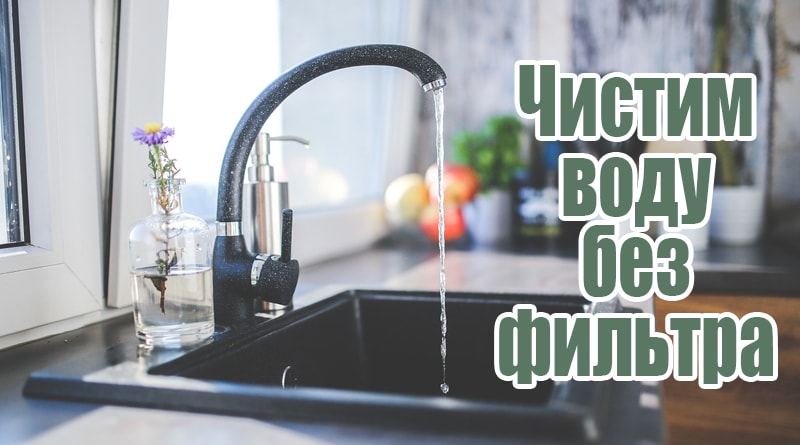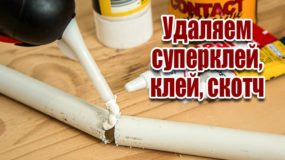Our careless attitude to the composition of drinking water makes internal organs be the only barrier against serious diseases. But the human body is not able to cope with all the harmful substances that can be found in water. Like any “equipment” subjected to heavy loads, this natural filter will fail sooner or later.
The natural causes of water pollution are supplemented by the effects of active agricultural and industrial activities. And even the treated liquid supplied by the city services is far from perfect in terms of performance. As a result of depreciation of equipment, the use of old technologies, violations allowed during processing, drinking tap water is dangerous. It remains to take care of its quality on its own - that is, to clean it at home with or without special filters.
Preparation and Precautions

An improperly cleaned procedure can degrade water quality. You can avoid such situations by observing several rules.
It is necessary to take into account the side effects of the selected methods and not neglect the measures that neutralize their effect. The cleaning technique must be carried out in strict accordance with the instructions.
If special equipment is used to normalize the quality, before installing it, you need to familiarize yourself with the operating features - care requirements, replacement of replacement parts, and the specifics of the operating mode.
Types of Water Pollutants

Water can contain up to 4,000 variants of impurities that are detrimental to quality. Among the most common types of water pollution are the following types.
Coarse impurities
They represent a suspension of large, insoluble particles of rust, sand, silt, clay. In tap water, rust can most often be detected due to old water pipes. Such water is unsuitable for food and clogs pipelines and faucets, leading to breakdowns of plumbing equipment.
Chlorine and its compounds
Chlorine is added to tap water as a disinfectant. This substance is able to enhance the allergic reaction, can cause irritation of the mucous membranes and skin, negatively affects the metabolism, the functioning of the immune system, intestinal microflora. It can provoke kidney inflammation and cancer.
Salts of calcium and magnesium
The high salt content makes the water “hard."The consumption of such a fluid increases the risk of kidney stones, and a large amount of magnesium negatively affects the functioning of the nervous system. Hard water does not affect the condition of hair and skin in the best way.
Iron
For one liter of water, the norm of iron content is 0.1-0.3 mg. Exceeding this indicator makes water toxic. The nervous, immune, reproductive and digestive systems suffer. The liver, kidneys and pancreas. The processes of blood formation and metabolism worsen, allergic reactions can occur. The process of removing toxins is disrupted.
Manganese
The manganese content in drinking water should be less than 0.1. Manganese can cause nervous disorders, diseases of the hematopoietic and bone systems. A high concentration of the substance reduces intellectual abilities, and in pregnant women it can cause deviations in the mental development of the fetus.
Heavy metals
Lead, chromium, zinc, cadmium, nickel, mercury are toxic metals. They can provoke bone marrow diseases, atherosclerosis, hypertension. Lead is most likely to be detected in tap water. Gaskets made of this metal are used in old pipelines because of their durability.
Nitrates
By this name is meant a number of substances - nitrates, pesticides, herbicides, nitrites, which lead to a deficiency of oxygen in the tissues of the body. Get into the water as a result of agricultural activities.
Microorganisms
Water can contain both bacteria and viruses. They become the cause of intestinal disorders, diseases of the stomach, the onset of hepatitis, polio and other diseases.
Table: Ways to combat water pollution
| Pollutant | Folk cleansing method | Filters for removing dirt |
|---|---|---|
| Coarse impurities |
| Mechanical cleaning |
| Chlorine |
|
|
| Salts of calcium and magnesium |
|
|
| Iron |
|
|
| Manganese |
|
|
| Heavy metals |
|
|
| Nitrates |
|
|
| Microorganisms |
|
|
Folk cleaning methods without filters
The need to clean and disinfect water people have long realized. To date, human experience has accumulated many effective methods of cleaning at home.
Boiling
High temperature kills microorganisms, and calcium and magnesium salts lead to a solid precipitate that can be traced. In the process of boiling, volatile substances such as chlorine leave.
- Bring the water to a boil.
- Boil for 15 - 25 minutes with the lid open.
- After letting stand.
- Drain without touching the bottom sediment layer.
Freezing
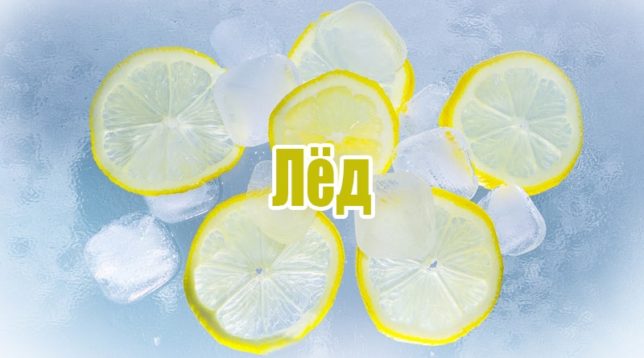
Cleaning is carried out by displacing impurities from water that crystallizes under the influence of low temperature.However, after a certain concentration of impurities is reached in unfrozen water, they will be built into the structure of the ice crystal lattice in the form of capsules. Therefore, it is important not to miss the moment when you can separate clean water.
- Put a pot of water in the freezer.
- Leave for a few hours.
- When half the volume freezes, drain the liquid residue.
- Melt the remaining ice - this water can be used.
Upholding
The method allows you to remove chlorine and some other volatile substances (for example, ammonia) due to evaporation, as well as partially weed out salts, which will fall to the bottom in the form of a solid precipitate.
- Pour water into a ceramic or glass container.
- Leave on for 8 hours.
- Stir with a spoon during the first 2 hours: during this time chlorine will evaporate, stirring will speed up the process.
- Then do not touch the water for 6 hours. This time is required for the sedimentation of other impurities, so you can not mix.
- Trying not to shake the water, pour into another bowl, leaving about a quarter of the liquid at the bottom.
- Freeze or boil.
Activated carbon
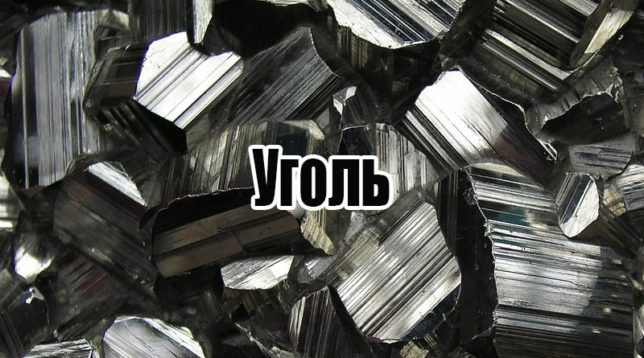
Coal has the ability to absorb organic compounds and gases dissolved in water, in particular chlorine. There is special coal for cleaning, but you can use pharmacy activated carbon in tablets.
- Wrap coal tablets at the rate of 4 pieces per liter in gauze.
- Put on the bottom of the dishes and pour water.
- Leave on for 6-8 hours.
- Strain and boil the water.
Silver and copper
Copper and silver destroy harmful microflora in water. Silver does not allow bacteria to develop subsequently (water treated with this metal can be stored for several months), but it can be consumed in food dosed.
- For silver cleaning in a container you can put a silver spoon at night.
- For copper cleaning, it is enough to hold water for 4 hours in a copper bowl (but no more, in order to avoid metal poisoning).
Shungite
Shungite not only cleans chlorine, nitrates, microorganisms, manganese and iron, but also fills with useful trace elements. One stone can be used for about six months, you only need to clear it of plaque.
Instructions: take 100 grams of shungite per 1 liter of water, place for 3 days, then drain the top layer without affecting the bottom.
Silicon
Silicon disinfects, precipitates iron, mercury and phosphorus compounds and neutralizes chlorine.
Black silicon is used, the life of which is unlimited (must be cleaned of plaque after each use).
- Rinse silicon and put on the bottom of a glass container with water (3 liters - 50 grams).
- To defend from 3 to 7 days in a dark place.
- Gently, without shaking, drain the water, leaving 5 centimeters of the bottom layer.
other methods
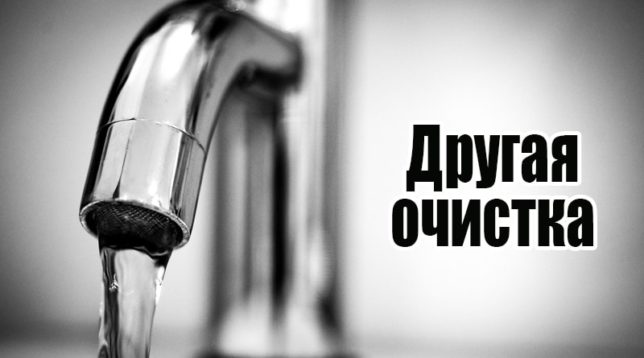
Folk practice knows several more ways:
- Quartz. It is made in the same way as clarification with shungite and silicon: water with quartz stones (200 g per 3 liters) must be infused for 3 days. Can be mixed with silicon. This mineral is able to cleanse heavy metals, chlorine, iron, manganese, aluminum, nitrates and pathogens.
- Kitchen salt. A tablespoon of salt, diluted in two liters of water and infused for half an hour, cleanses bacteria and heavy metal compounds. But this method cannot be used constantly.
- Herbal cleaners. Ripe rowan berries, juniper branches, bird cherry leaves, willow bark and onion husks have a bactericidal effect. For this, any of the listed ingredients, previously washed, is put in water for 12 hours (except for mountain ash, it is enough for three).
- Wine. It is possible to purify water from harmful microflora by mixing 2 parts of it with 1 part of wine and keeping it for 15 minutes.
- Medications. For the same purpose, iodine (3 drops per 1 liter), vinegar (1 teaspoon) and potassium permanganate (light pink solution) are used. After adding iodine and vinegar, water can be consumed after 2 hours.
The disadvantages of folk methods
| Cleaning method | Ineffective | Side effects |
|---|---|---|
| Boiling |
|
|
| Freezing | - | Useful salts are also eliminated from the water. |
| Upholding |
| - |
| Activated Carbon Purification |
| - |
| Silver and Copper Cleansing | Does not eliminate inorganic impurities. | Silver and copper are toxic metals, the method requires special care. |
Special equipment for water purification
Technological progress has contributed to the development of high-quality water purification methods. Currently used cleaning equipment involves:
- Filters of various types;
- Chemical effect on water;
- Physical and chemical processes;
- Physical processes;
- Biological mechanisms.
The purification method is determined by the type of impurities that must be removed.
Filtration systems
- Mechanical filters They are used to remove large particles from water, such as rust, sand, silt and others. The filtering device is a liquid-permeable barrier that traps undissolved impurity particles. This is a system of several barriers - from coarse filtration nets for large debris to fine filters for particles no larger than 5 microns in size. Water is purified in several stages, due to this, the load on the cartridges is reduced.
- Sorption filters. Can be used with mechanical filters. Remove impurities due to absorbents, effective for chlorine and organic compounds. The role of the absorbent material is played by coconut charcoal (from the shell), its effectiveness is 4 times higher than that of charcoal.
- Ozone cleaners (chemical treatment). Designed to purify water from impurities of metals and microorganisms (spores resistant to chlorine). For work, the property of ozone is used to liberate oxygen when oxidized in water, which oxidizes metallic impurities. Then they settle and can be removed.
Physicochemical mode of action devices
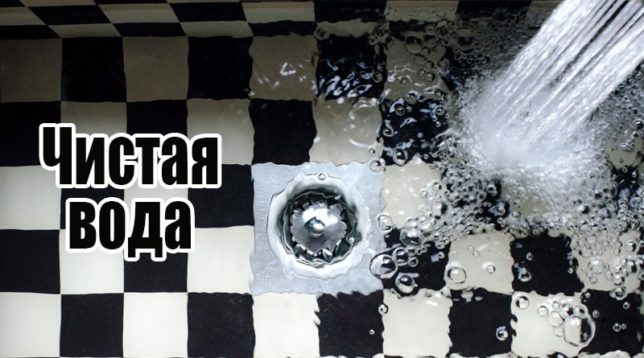
- Electrochemical aeration. They are used to remove dissolved impurities that can be oxidized - iron, manganese, chlorine, hydrogen sulfide, salts of heavy metals. First of all, they are used to cleanse iron impurities - these filters are effective even at high concentrations, up to 30 mg per liter. Impurities are oxidized due to the appearance of free oxygen ions in water, the concentration of which increases when an electric current passes through water. Oxidized substances are deposited on the filter.
- Air aeration. They are used for the same purpose, but in this case, water is saturated with oxygen in another way - they are pumped under pressure.
- Ion exchange filters. They are used to purify water containing impurities of metals - iron, magnesium, manganese, potassium, as well as nitrates. Water is passed through a mass of synthetic resin containing substances that attach metal ions to themselves, removing them from the liquid. There are devices combining the functions of sorption and ion-exchange filters. In devices of this type, the absorbing mass consists of a mixture of granules of an ion-replacing resin and a carbon absorbent.
Physical Process Equipment
- Reverse osmosis. Almost all dissolved impurities are retained - iron, salts of magnesium and calcium, heavy metals, as well as nitrates and microorganisms. The role of the barrier is performed by a membrane with microholes through which liquid is driven under pressure. These holes are so small that only water and oxygen molecules can pass through them. The removed impurities are removed from the membranes.
- UV filters. Disinfects water when exposed to ultraviolet rays.
- Installations for biological filtration. Reduces the concentration of iron, hydrogen sulfide and acid in water, due to the ability of some bacteria to absorb these substances. The filter involves subsequent disinfection with ultraviolet light and the removal of microbial waste products using a sorption system.
Tips & Warnings
- To give the water a pleasant taste, it is worth using freezing and purification with activated carbon and silicon.
- The use of coal, like shungite, removes unpleasant odors.
- To saturate water deprived of useful trace elements (thawed, purified by reverse osmosis), you need to add 100 ml of mineral water to 1 liter of purified water.
- Water will be protected by shungite and silver.
Weak points of cleaning devices
- Reverse osmosis plants show the best result in removing impurities, but due to the specifics of the cleaning method, membrane filters relieve not only hazardous compounds, but also beneficial microelements. The constant consumption of water purified by this method can lead to a deficiency of necessary substances in the body, therefore, mineralization plants must be used together with such filters.
- When using the device for ozonation, you need to remember that purified water is not stored for a long time. Ozone quickly destroys microorganisms, but does not have a duration of action. With ozonation, organic compounds are destroyed, which creates a favorable environment for bacteria.
- Exposure to ultraviolet light destroys the bacterial environment in water, but does not purify it from impurities of salts, metals, nitrates. It is advisable to combine UV filters with ozonizing devices.
- Sorption filters, accumulating organic matter, create an environment for the intensive reproduction of bacteria. Therefore, when using them, an additional disinfection system is necessary.
- Ion-exchange filters are applicable for water purification, the concentration of iron in which is not more than 5 milligrams per liter. If the iron content is higher, it will not provide an adequate level of purification.
- During operation of the ion-exchange filter, large particles of oxidized iron clog the resin over time. A film forms on its surface, which is a breeding ground for bacteria. It is necessary to regularly wash the resin with a solution of sodium chloride.
Service life of replacement parts
- The life of the resins for the ion-exchange filter is 2-3 years.
- The membrane for reverse osmosis filters becomes unusable after 18-36 months of use.
- The carbon filter is designed for 6-9 months.
Used cleaning methods can neutralize the most harmful impurities. Choosing the best method, taking into account the nature of pollution, ergonomics and efficiency of the technology, you can provide your home with a source of living, healthy water and maintain health.

